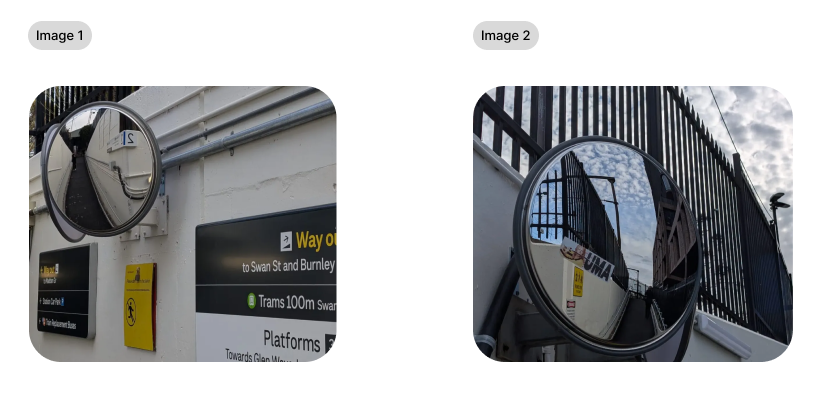Convex Mirror: Simple Reflection Used for Safety
How a centuries-old optical invention evolved from decorative art to essential safety infrastructure, reducing friction in everyday movement while preventing accidents.
Modern safety convex mirrors are an evolutionary refinement of our ancestors' survival strategy of using water reflections to detect approaching threats without turning around—transforming this primal need to see "by-comers" from a chance encounter with still pools into strategically placed tools that expand our peripheral awareness in the same way early humans used riverbanks to spot predators, except now we're avoiding forklifts and pedestrian collisions.
We all might have come across these mirrors in our pathways. This is to help notice the by-comers. Mostly seen at:
- Public transport infrastructure (train stations, bus depots)
- Car parks and underground parking facilities
- Road intersections and driveways
- Warehouses and industrial sites
- Shopping centres and retail spaces
- and anywhere there is a tricky turn and if a unnoticed thing comes our way.
If we think of replacing these mirrors will create enough friction in everyday simple tasks. Imagine a signal or a barrier system in every hook or turn and can only pass by if the way is clear. Humans have been walking on this earth way before any technology has been intervened. Things like cars and other means came after we have evolved and can be incorporated with technology.

The Origin:
The mirror on the wall was said to be the first appeared anywhere. The painting The Arnolfini Portrait (1434) by Jan van Eyck ( as seen below in image 3 ).

While the earliest mirrors date back thousands of years to polished obsidian, the convex glass mirror that would later inspire our modern safety solution was a breakthrough invention around 1300 CE, notably "Venice mirrors" with the development of early spectacles in the 1280s [Ometo MirrorxLive Science]. By the 14th century, convex mirrors of glowing-on-their glass began appearing in European locations, following which Jan van Eyck's Wedding Portrait from 1434 [Beginnings of the Modern Convex Mirror | Ometo Decorative Convex Mirrors].
Modern Safety Applications:
The transformation from decorative to functional safety tool happened during the industrial age. German chemist Justus von Liebig's 1835 development of silver-backed glass mirrors [Wikipedia - Wikipedia] made mass production possible, eventually leading to their practical deployment in workplaces and transport.
Contemporary (Modern Applications): While specific designer interviews are rare, the underlying philosophy emerges from safety engineering principles. Modern safety professionals recognise that "convex mirrors are essential for preventing workplace accidents" because "their unique design provides a broader field of view, eliminating blind spots" [Australasian Eliminations Mirror Market]. The genius of convex mirror placement—at intersections, forklift crossings, and warehouse corners—reflects an understanding that preventing accidents is exponentially better than reacting to them, as Australian retailers like [Appliances] Mirrors - Blind Spot Mirrors for Cars | Trucks | SUVs - SpotterMirror.com creates smoother human flow.
The safety expert noted that these mirrors embody the philosophy of reducing friction in daily operations—rather than complex signalling systems or barriers that would slow down natural movement, convex mirrors silently enable efficient flow and safety. Their value is confirmed in contemporary Australian workplaces through resources like [Indoor Convex Mirrors] without interrupting the flow of people and vehicles.
The genius lies in their invisibility as design intervention—like your Melbourne bus signage example, they work precisely because users don't have to stop and think about them; they simply enable safer, more efficient movement through space throughout Australian locations that would otherwise become bottlenecks.